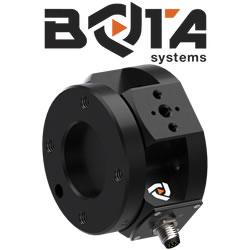LASER COMPONENTS announces the first digital photodiode sensors, DPDS Importance: High
Digital Vis-NIR Detector Modules
LASER COMPONENTS announces the first digital photodiode sensors, DPDS. The
system is ready for immediate application.
The MAJOR series will be available in two versions: For the wavelength range from
500 - 1700 nm the products will be equipped with InGaAs detectors, for the range
from 700 - 2200 nm with extended InGaAs detectors. On an optional basis versions
up to 2600 nm will be available, too. The integrated M12 thread facilitates the integration
of the module.
The DPDS modules have broad capabilities: they are equipped with an automatic amplification
adjustment, averaging, time stamp, and temperature protocol. Communication
is carried out through an RS-232 interface. Use of the modules is extremely easy;
they have an intuitive user interface. Thus, all parameters can be easily adjusted.
Upon customer request, the modules can be modified with regard to the controls, the
data to be analyzed, and the structual shape.
The Company LASER COMPONENTS is specialized in the development, manufacture, and sale of components and services for the laser and opto-electronics industries. With sales offices in four different
countries, the company has served its customers since 1982. In-house production at six locations
in Germany, Canada, and the USA began in 1986 and is meanwhile responsible for about
half of its turnover. Currently, the family-run business employs more than 150 people worldwide.
Featured Product

Bota Systems - The SensONE 6-axis force torque sensor for robots
Our Bota Systems force torque sensors, like the SensONE, are designed for collaborative and industrial robots. It enables human machine interaction, provides force, vision and inertia data and offers "plug and work" foll all platforms. The compact design is dustproof and water-resistant. The ISO 9409-1-50-4-M6 mounting flange makes integrating the SensONE sensor with robots extremely easy.
No adapter is needed, only fasteners! The SensONE sensor is a one of its kind product and the best solution for force feedback applications and collaborative robots at its price. The SensONE is available in two communication options and includes software integration with TwinCAT, ROS, LabVIEW and MATLAB®.
